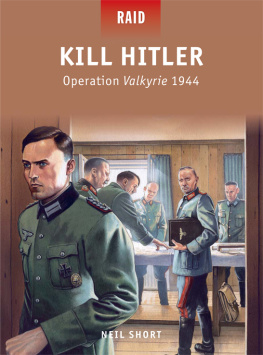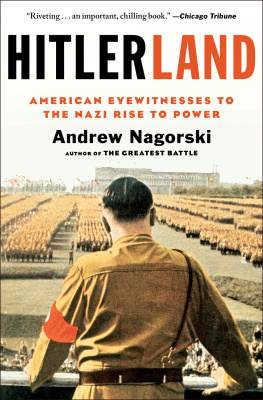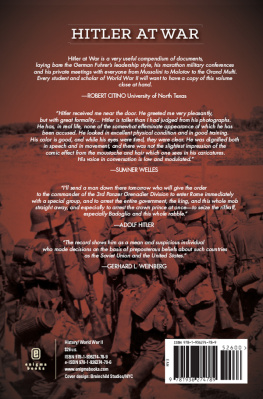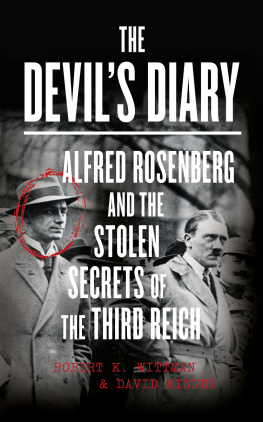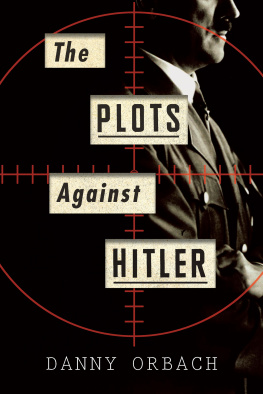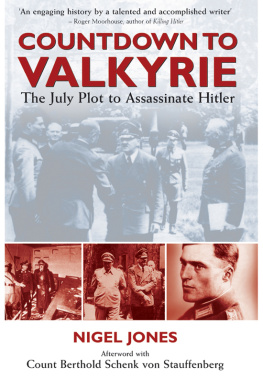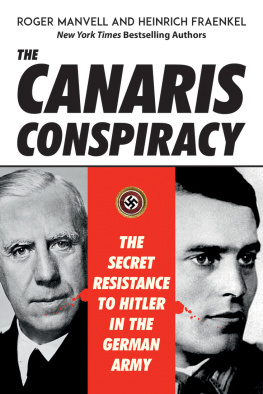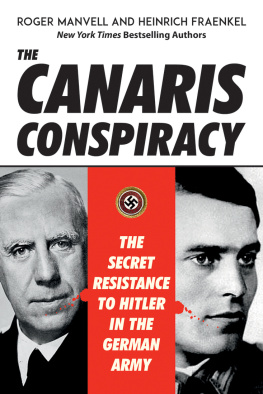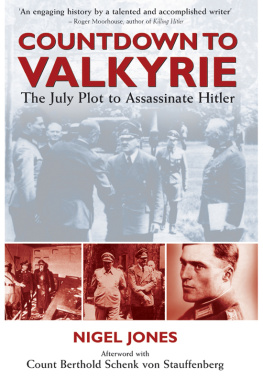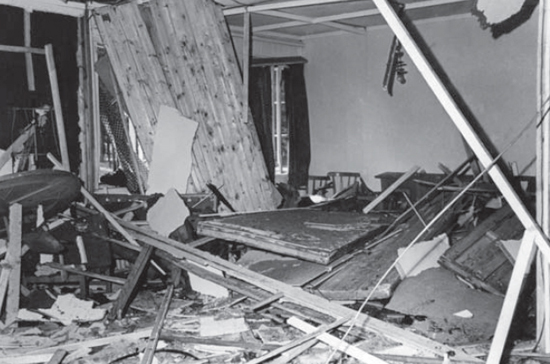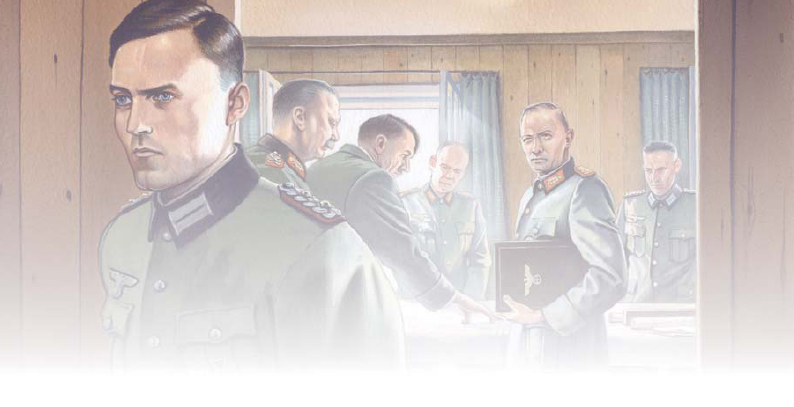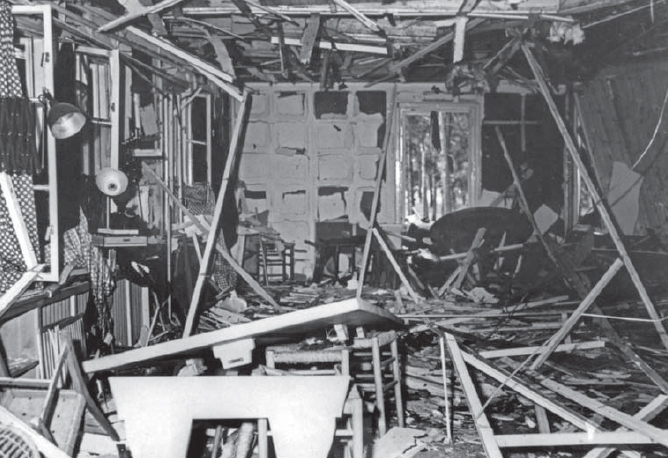KILL HITLER
Operation Valkyrie 1944
NEIL SHORT
CONTENTS
INTRODUCTION
On 20 July 1944 a group of disaffected German Army officers launched one of the most daring undertakings of World War II: an attempt to kill Adolf Hitler at the Wolfsschanze (Wolfs Lair), the Fhrers East Prussian headquarters. The operation was daring because security around Hitler was extremely tight, which befitted a man who was almost universally hated and who was paranoid about assassination or worse, being captured by his enemies. The Fhrers movements were a closely guarded secret, although in truth, by this stage in the war, Hitler rarely left his concrete bunker at the Wolfsschanze. Hitler had designed the bunker himself and it was proof against the heaviest Allied bombs. Around it were a series of barbed-wire fences; beyond these were minefields and roadblocks. Elite troops were hand-picked for his personal security and additional heavily armed troops patrolled the perimeter of the headquarters or were stationed on roads leading to it.
The raid was not only daring in terms of the physical dangers it presented, it was also unique, as the conspirators were planning to assassinate the leader of a major world power. Moreover, Hitler was the legally elected leader of Germany and a man to whom they had sworn an oath of allegiance. This meant their actions were treasonable, and each man knew that if the assassination attempt failed they would face the ultimate sanction. Bad luck and a quick and ruthless response from the Nazi leadership, which stood in stark contrast to the ponderous and often half-hearted actions of the plotters, meant the operation foundered and most of the conspirators died, either by their own hands or by execution following a demeaning show trial.
Although the 20 July Plot is by far the best-known attempt on Hitlers life, with countless books on the subject and Hollywood adaptations, the army had in fact planned to arrest or kill Hitler on a number of occasions. As early as 1938, before the war in Europe had started, several senior officers sought to remove Hitler from power, with the support of the Western democracies. The appeasement of Hitler put paid to this attempt, but did not entirely extinguish the fire and an effort was made to resurrect the plan before the invasion of France in 1940. This time the resolve of the armys leadership failed. Continental Europe was overrun and many in Germany, including the army, were now intoxicated by the seemingly unending victories. Resistance based on moral repugnance continued, but it was not until the tide of the war began to turn that serious consideration was again given to removing Hitler. There were attempts to shoot him, blow up his plane and even use a suicide bomber, but none succeeded.
By July 1944 the plotters were getting desperate. The Allies had landed in Normandy and a number of key figures in the resistance had been arrested. It was now or never. With others either unwilling or unable to undertake the task, a young officer, Oberst Claus Schenk Graf von Stauffenberg, a wounded veteran of the North African campaign, undertook to kill Hitler. On 20 July 1944 he flew to the Wolfsschanze, ostensibly to brief Hitler on the state of the Ersatzheer (Replacement Army). On entering the briefing room, he secreted a bomb before making his exit. At 1242hrs it detonated, severely damaging the briefing room, killing four people and injuring many more. Miraculously, Hitler survived and was ushered to safety.
A view of the devastated briefing room after the bomb exploded. The heavy table on which the maps were spread and which helped save Hitlers life is in the foreground. Also visible are a number of stools that were stored under the table. (NARA)
Yet, although the Fhrer had survived, the conspirators still had a chance of overthrowing the regime. Stauffenberg returned to Berlin and mobilized troops in the city and further afield. Under the auspices of Operation Valkyrie emergency powers that had been drawn up to deal with internal unrest key buildings were seized and individuals loyal to the regime were arrested. Communication links to the Wolfsschanze had also been disrupted, but had not been completely cut. Consequently, Hitler and his cohorts were aware of the coup attempt in Berlin and were able to take steps to crush it and deliver their own message over the radio to the German people. As the news of Hitlers survival filtered out, the coup gradually lost momentum. By late evening it was clear that the attempt had failed.

Those involved with the plot were tried and executed. In the following days and weeks the net was cast much wider, and anyone associated with the resistance was rounded up. In the end it is believed that some 4,000 people were executed. However, the fallout from the 20 July Plot went much further. The conspiracy among senior officers was used to explain the reverses at the front and, increasingly, Hitler placed his faith in officers from the Kriegsmarine (navy) and Luftwaffe (air force), even though these branches of the armed forces were largely irrelevant in the final days of the war. The Wehrmacht (German armed forces) was purged, senior officers were removed and replaced by more trustworthy, but often less capable, officers and, in a final humiliation, the military salute was replaced by the Nazi salute. Politically, Himmlers power grew. He was put in charge of the replacement army and was responsible for raising a new peoples army (the new Volk units), which was commanded by SS officers and reported through the SS chain of command. Paradoxically, although Himmlers power grew, these new responsibilities took him away from the Fhrer and, arguably, the major benefactor was Martin Bormann, who, as private secretary, controlled access to Hitler.
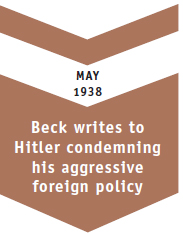
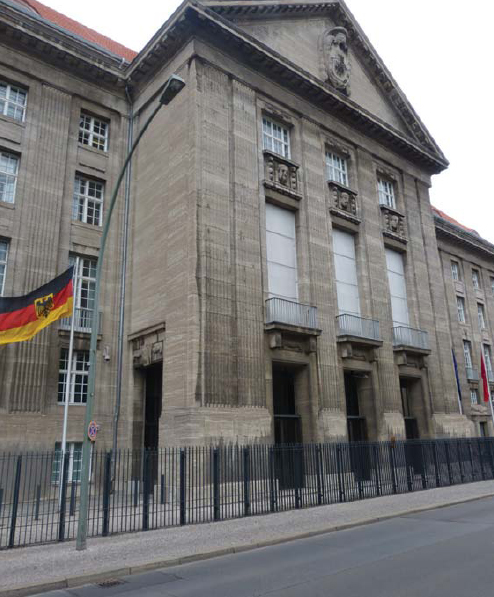
Front elevation of the Bendlerblock as it looks today. It overlooks the Landwehrkanal, which links to the River Spree. The building was the headquarters of the Replacement Army during World War II and is still used by the German Ministry of Defence. (Author)
At a personal level the plot had enormous ramifications, and not just for those involved in the coup. The families of those executed or incarcerated not only suffered personal loss; in many cases they were placed under house arrest and, thereafter, their every action was viewed with suspicion. Hitler himself, although the physical injuries he received on 20 July were relatively minor, was clearly shaken by the experience and had deep psychological scars. They served to deepen his paranoia and his leadership became increasingly erratic until, on 30 April 1945, he took his own life.
Next page
